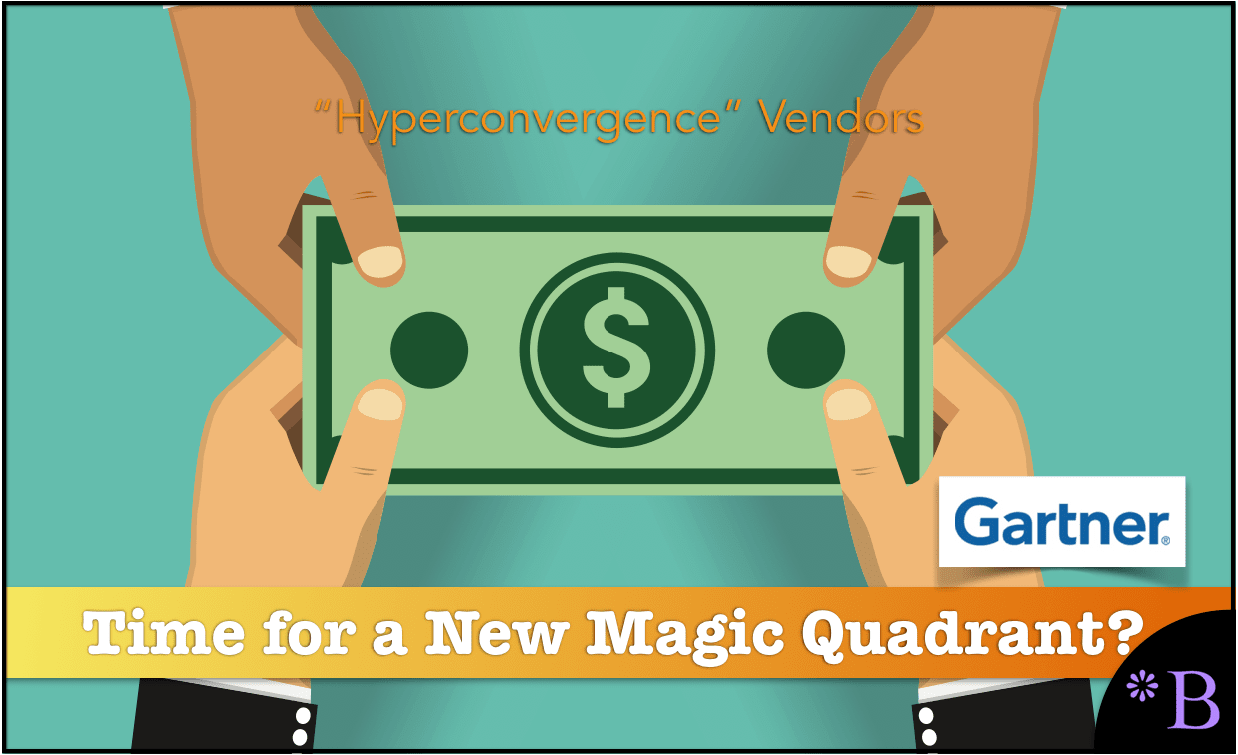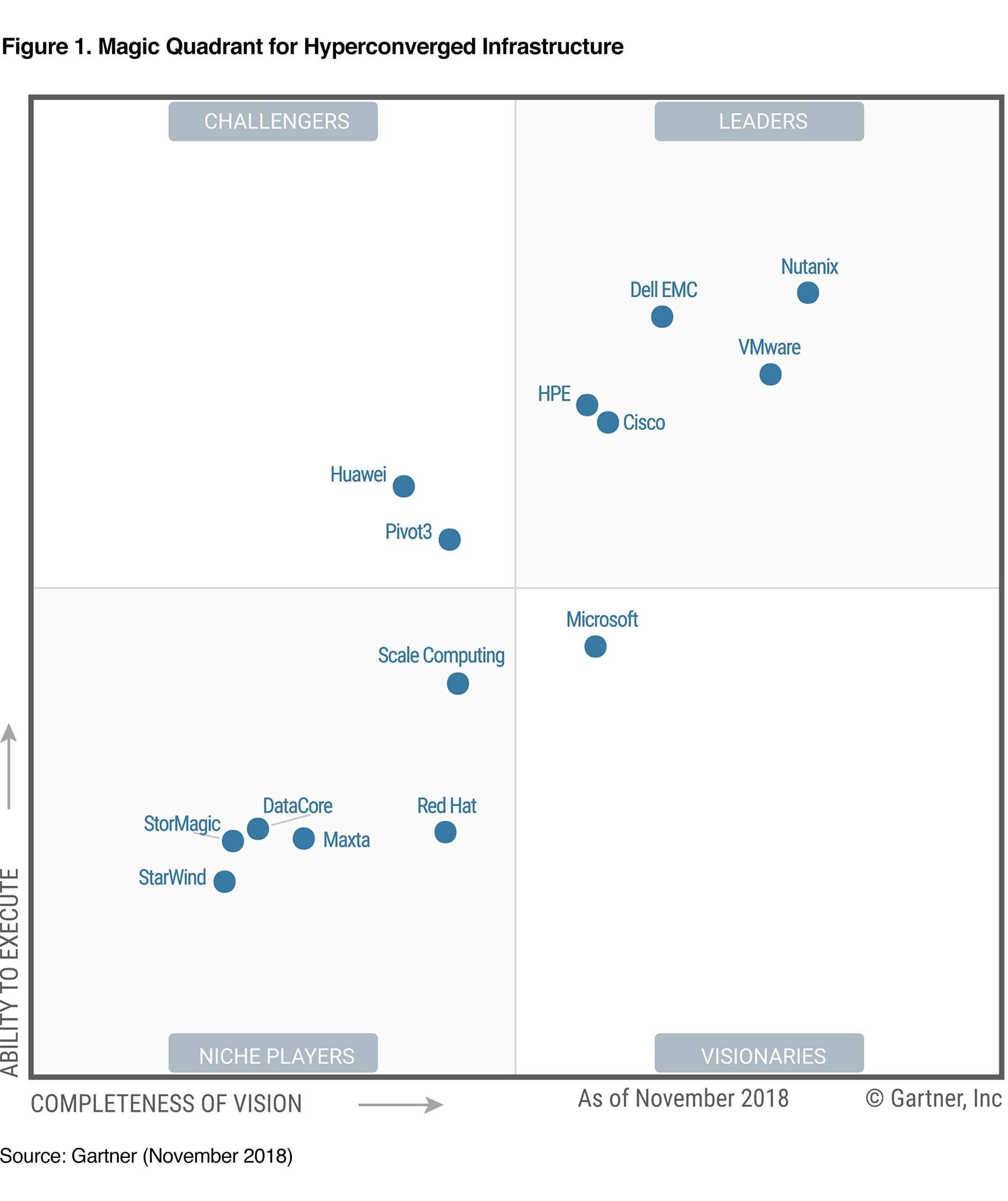How Gartner Jumped on the Hyperconvergence Bandwagon in Response to Vendor Money
Executive Summary
- Gartner will promote any IT construct regardless of its validity in return for vendor money.
- Hyperconvergence and Gartner’s hyperconvergence MQ is yet another example of this.

Introduction
We have tracked a pattern by Gartner where they put their weight behind something that lacks any evidence for its existence. We found this yet again on the topic of hyperconvergence, as we cover in the article Why Both Superconvergence and Hyperconvergence are Hollow Marketing Constructs. Hyperconvergence is a concept that several vendors, like Nutanix, have built a lot of their marketing message around. However, the problem is that hyperconvergence is not real. It is just a way for vendors in the data center space to try to differentiate from one another. You will learn how Gartner was more than happy to create a Magic Quadrant for this non-category.
Our References for This Article
If you want to see our references for this article and other related Brightwork articles, see this link.
Notice of Lack of Financial Bias: You are reading one of the only independent sources on Gartner. If you look at the information software vendors or consulting firms provide about Gartner, it is exclusively about using Gartner to help them sell software or consulting services. None of these sources care that Gartner is a faux research entity that makes up its findings and has massive financial conflicts. The IT industry is generally petrified of Gartner and only publishes complementary information about them. The article below is very different.
- First, it is published by a research entity, not an unreliable software vendor or consulting firm that has no idea what research is.
- Second, no one paid for this article to be written, and it is not pretending to inform you while being rigged to sell you software or consulting services as a vendor or consulting firm that shares their ranking in some Gartner report. Unlike nearly every other article you will find from Google on this topic, it has had no input from any company's marketing or sales department.

It is usually a good thing if the Magic Quadrant covers a topic that is real. But Gartner appears to have different criteria for creating a Magic Quadrant, which is enough vendors willing to pay for it.
This is a repeat of the transalytical database concept, which we cover in the article How to Understand What is a Transalytical Database, this time pushed by Forrester rather than Gartner. After Forrester and SAP declared this non-existent category paid Forrester to say that SAP’s HANA was a leader in this category, SAP told analysts on a quarterly call that Forrester made this declaration but left out that part that SAP paid Forrester to say this.
The Gartner Pattern
The pattern that vendors follow with Gartner regarding new marketing constructs is the following.
- Create a new trendy term.
- Build an association between that term and your company.
- Pay Gartner to create a Magic Quadrant and get your company located in the Leader quadrant.
The effective thing about this is that because much of the projection is about the future, the new concept’s claims can’t be verified.
A second thing that makes this strategy effective is that virtually no media coverage goes back to fact check the claims that were made in the past. New concepts are introduced so quickly. The media entities are so tightly financially connected to vendors and consulting companies that there is no interest in exposing previous ideas that never came to fruition.
Conclusion
Gartner is little concerned with the reality of what it writes. It knows that it can charge for a Magic Quadrant, and vendors are willing to pay to be showcased in Magic Quadrants as it helps them make more sales. There is no concept on the part of Gartner regarding quality, and as far as we can tell, Brightwork Research & Analysis is the only entity that performs any fact checking of any Gartner.

The Problem: Thinking that Gartner is Focused on What is True
Gartner is hired by companies who fundamentally don’t understand how Gartner functions. Gartner has virtually no first-hand experience in the technologies they evaluate and get most of their information from executives at buyers or executives at vendors and consulting firms. Gartner is also not a research entity. They compare very poorly to real research entities once you dig into the details, as we did in the article How Gartner’s Research Compares to Real Research Entities. Gartner serves to direct IT spending to the most expensive solutions as these are the companies that can afford to pay Gartner the most money. Gartner has enormously aggressive internal sales goals that place accuracy far below revenue growth in importance.